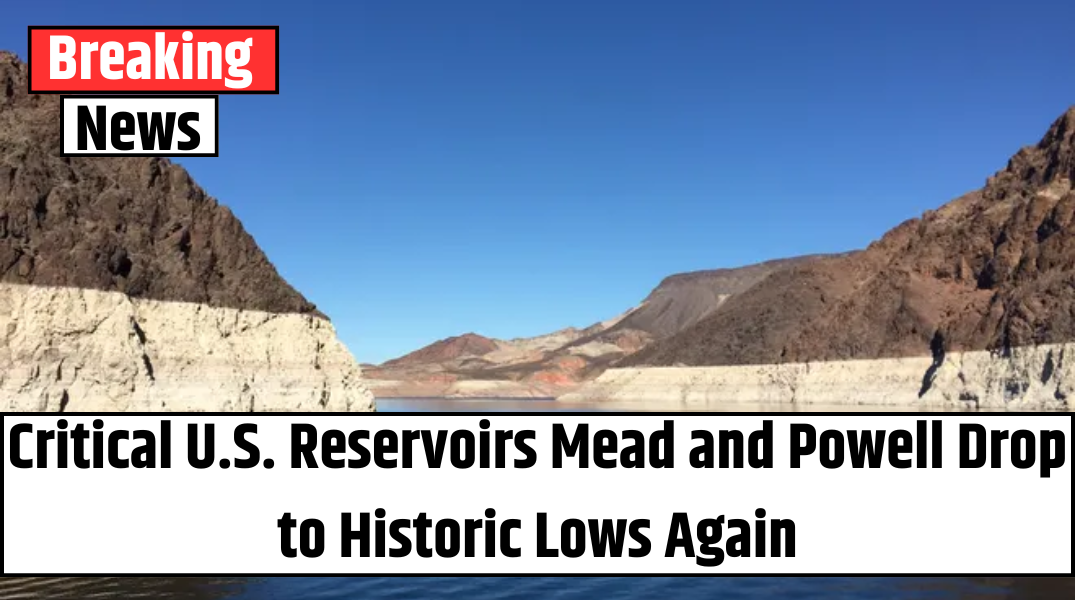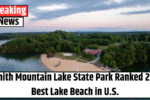After a temporary reprieve in 2023 and early 2024, the drought crisis gripping the western United States has returned with renewed force. Fueled by low reservoir levels, soaring temperatures, and increasing wildfire threats, much of the region is once again battling water scarcity — with conditions deteriorating rapidly.
According to a recent analysis by environmental monitoring firm AEM, the affected area under drought has tripled compared to this time last year. “This situation is worsening across key states like Oregon, Idaho, Washington, northern Utah, and Montana,” said James Aman, senior meteorologist at AEM, in a statement to USA TODAY.
Drought Rebound: From Relief to Crisis
In late 2021, nearly 94% of the West was in drought. Though conditions improved in 2023, with drought coverage dropping to 18%, the region is now back to 58% under drought conditions, according to the U.S. Drought Monitor.
Lakes Mead and Powell: Still Deep in Crisis
The Southwest’s Colorado River Basin — home to Lakes Mead and Powell, the nation’s largest reservoirs — continues to struggle under a multi-decade water crisis worsened by climate change, overuse, and population growth.
-
Lake Mead is now at just 31% capacity
-
Lake Powell stands at 34%, according to the Desert Research Institute
Though spring snowmelt helped replenish both lakes earlier this year, forecasts indicate declining levels through the end of 2025, with Lake Mead projected to hover just above 1,050 feet, avoiding but nearing its all-time low of 1,041 feet set in 2022.
These two reservoirs supply drinking water to over 40 million Americans, support farming across seven states, power hydroelectric dams, and fulfill treaty obligations to Mexico and Native American tribes.
“They are absolutely vital to the West’s water infrastructure,” Aman said. “Over 50% of the river’s water goes toward agriculture, and nearly 20% is for municipal use.”
Major Cities at Risk
The Colorado River system plays a critical role in sustaining cities including:
-
Denver
-
Los Angeles
-
Phoenix
-
Salt Lake City
-
San Diego
-
And provides 90% of Las Vegas’s drinking water
Also Read – MSU Researchers Analyze Climate Change Impact on 24,000 U.S. Lakes Using Open Data
Trouble Ahead: Heat, Dryness, and Fire
Looking ahead, the National Weather Service Climate Prediction Center is forecasting below-average rainfall and above-normal temperatures across much of the West, including the Rockies and Pacific Northwest. The combination of heat and dry conditions is expected to put immense pressure on local water systems and energy grids.
“We’re facing a dangerous summer,” Aman warned, “with increased strain on agriculture, infrastructure, and emergency services.”
Monsoon Season: A Sliver of Hope
There is some relief expected in parts of the Southwest. A strong North American monsoon is predicted to bring above-average rainfall to Arizona, New Mexico, and parts of Colorado and Utah through July and possibly August.
However, Aman cautions that this may not be enough. “One wet season cannot erase years of deep drought,” he said.
Wildfire Season Heating Up
With dry conditions setting in, wildfire threats are rising sharply. AEM warns that the Great Basin, California, and northern Rockies will likely face above-average fire danger throughout summer.
Adding to concerns, Canada’s western provinces are also under extreme fire risk, with burned acreage already three times above seasonal averages.
“This summer will bring a dangerous blend of heat, drought, and built-up fuel loads,” Aman noted. “We’re already seeing wildfire activity tracking ahead of average on both sides of the border.”
Fireworks and the July Fourth Wildfire Risk
The Fourth of July remains one of the most hazardous holidays for wildfires in the U.S. due to the widespread use of fireworks. According to Aman, “The western half of the country sees a huge concentration of fire starts caused by fireworks — especially in national parks and forests.”
Urban areas near large green spaces and rural communities are particularly vulnerable, and officials are urging caution during Independence Day celebrations.
As the Western U.S. faces another scorching, dry summer, the stakes are rising for millions of Americans who depend on these fragile water sources. The combination of drought, fire, and heat creates an urgent need for smarter water use and climate resilience planning.












